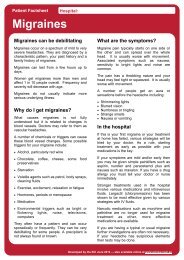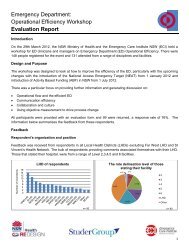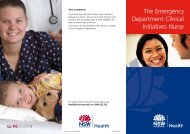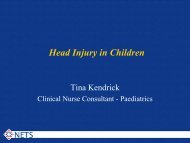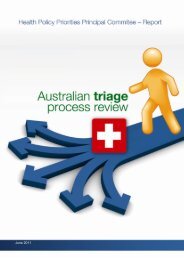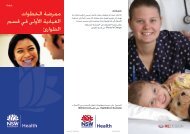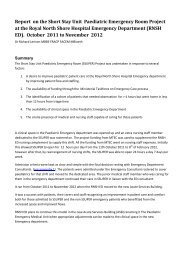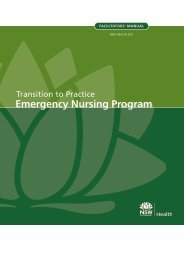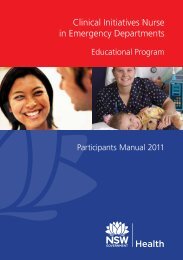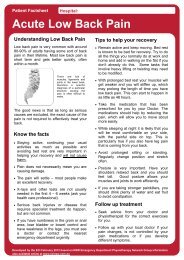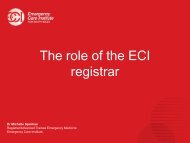Emergency Department Models of Care 2012 - NSW Health
Emergency Department Models of Care 2012 - NSW Health
Emergency Department Models of Care 2012 - NSW Health
- No tags were found...
Create successful ePaper yourself
Turn your PDF publications into a flip-book with our unique Google optimized e-Paper software.
SECTION 5Other Community healthcare servicesThis section provides an overview <strong>of</strong> community models <strong>of</strong>care that provide access to unscheduled ambulatory care.Other initiatives that assist the community to accessunscheduled care include:■■■■The pilot program for Urgent <strong>Care</strong> CentresAdvice linesConnecting care programAfter Hours GP Clinics.These initiatives are detailed on the following pages.Key principles for delineating who needs to go to anED■■■■Only patients who need the specific services <strong>of</strong> the<strong>Emergency</strong> <strong>Department</strong> (ED) should be assessed andtreated in the EDOther services must not use the ED as an alternate careprovider to cover periods <strong>of</strong> closure, leave orunavailabilityPatients who need other speciality services should bereferred directly to that service ¬– the ED adds no valueto that patient’s journey and in many cases, simply addsunnecessary delays.There are specific groups <strong>of</strong> patients who would notrequire emergency care if they were better managedwith appropriate resources in the community setting byprimary health carers such as general practitioners,APAC teams or chronic disease case managers.Programs to identify these patients and to bettermanage them will improve access to emergency care forpatients who actually need it.PAGE 58 <strong>NSW</strong> HEALTH <strong>Models</strong> <strong>of</strong> <strong>Emergency</strong> <strong>Care</strong>




